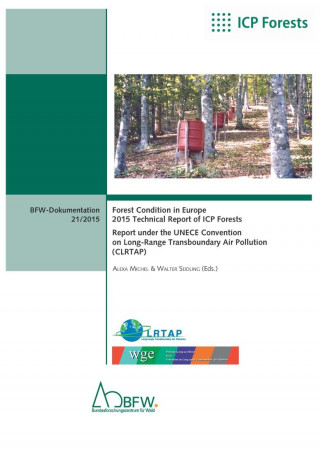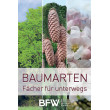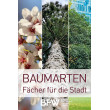- Nur online erhältlich
BFW-Dokumentation 21/2015
Michel, A.; Seidling, W. [Hrsg.]: Forest Condition in Europe 2015: Technical Report of ICP Forests Report under the UNECE Convention on Long-range Transboundary Air Pollution (CLRTAP). 2015. 182 S.
Zusammenfassung
This 2015 Technical Report provides descriptive statistics of the ICP Forests 2014 large-scale (Level I) and 2013 intensive (Level II) forest monitoring in up to 24 of the 42 ICP Forests member states. It also includes numerical results and national reports of the 2014 national crown condition survey in 25 member states. Data analyses for this report focus on tree crown condition and tree damage causes in 2014 including trend analyses, relationships between defoliation of different forest tree species and modelled nitrogen deposition, changes in ground level ozone concentrations and exposures from 2000 to 2013, and the spatial variation of deposition across Europe in 2013. The report contains information on the 3rd ICP Forests Scientific Conference in Athens in May 2014 and lists all 33 projects and 36 scientific publications in 2014 for which ICP Forests data and/or the ICP Forests infrastructure were used. For additional maps, tables, and figures, please refer to the extensive annex at the end of this report. The assessment of tree crown condition has been a core feature of the ICP Forests monitoring for 30 years. It is based on the concept that tree crowns are reflecting overall tree health and may therefore provide an early warning signal. This is the first Technical Report presenting temporal changes in tree defoliation without bias caused by the different number of plots from year to year. Only plots with temporarily consistent data were included and a median-based method robust against outliers was used (Mann-Kendall tau and Sen s slope estimates). In 2014, the crown condition of 104 994 sample trees on 5 611 transnational Level I plots in 24 participating countries was assessed. The overall mean defoliation of all trees was 21.5%. Broadleaved trees showed a slightly higher mean defoliation than coniferous trees (22.8% vs. 20.3%). Of the main tree species and tree species groups, deciduous temperate oaks (Quercus petraea and Q. robur) and evergreen oaks (Quercus coccifera, Q. ilex, Q. rotundifolia, and Q. suber) had the highest mean defoliation (25.2% and 24.7%, respectively) as well as the highest proportion of severely damaged trees and dead trees. The lowest defoliation was found in Scots pine and in Mediterranean lowland pines (Pinus brutia, P. halepensis, P. pinaster, and P. pinea) with a mean of 20.7% and 20.8%, respectively. Between 1992 and 2014, defoliation of most species and species groups has slightly to moderately increased; only for Scots pine and Norway spruce no or only a slight statistically significant over-all change was found. Some increases in defoliation can be linked to direct factors like drought periods, thereby emphasizing the value of the combined assessment of defoliation and damaging agents. The causes of tree damage were assessed on 97 293 trees on 5 400 plots in 22 countries. On 40.2% of the trees symptoms of damage of at least one defined agent group were recorded. Insects were the predominant cause of damage and had caused more than a quarter of all recorded damage symptoms (28.0%). Almost half of these insect-caused symptoms were attributed to defoliators (46.7%), which represented also the most frequent of all damage causes. The second major cause of tree damage was abiotic agents (15.5% of all damage symptoms). Within this agent group, half of the symptoms were attributed to drought (50.5%), while wind and frost had caused considerably less damage (8.5% and 4.5%, respectively). Fungi (including canker) were the third major causal agent (11.6%). The relationships between defoliation of four forest tree species and nitrogen deposition modelled by the EMEP MSC-W chemical transport model are described including the interaction effects of stand age and country. It was found that defoliation reveals considerable dynamics from year to year with a varying predictor structure. These species-specific dynamics cause temporally unstable results in correlation-, regression-, and other statistical approaches. Only in the case of strong predictors like stand age in Norway spruce and less distinct in other species comparatively constant relationships were found. More subtle effects like those caused by long-term nitrogen inputs seem to be obscured by other influences.





